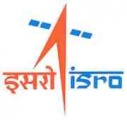If you wish to contribute or participate in the discussions about articles you are invited to contact the Editor
NAVIC
| IRNSS | |
|---|---|
| Title | NAVIC |
| Author(s) | GMV |
| Level | Basic |
| Year of Publication | 2011 |
The Indian Regional Navigational Satellite System (IRNSS) is an autonomous regional satellite navigation system owned by the Indian government and developed byIndian Space Research Organization (ISRO) .
IRNSS Introduction
IRNSS will be an independent regional navigation system covering an area of about 1500 kilometers around India. The system will be under complete Indian control, with the space segment, ground segment and user receivers all being built in India.[1]
IRNSS Architecture
IRNSS is planned with 7 satellites and a commensurate ground segment.
- The IRNSS Space Segment: 3 of the 7 satellites are geostationary (GEOs) and they will be located at 34º East, 83º East and 132º East longitude. There will be 4 GSOs in orbits of 24,000 km apogee and 250 km perigee inclined at 29 degrees. Two of the GSOs will cross the equator at 55º East and two at 111º East. The life span of the GEOs is 9.5 years and 11 years in the case of the GSOs. The Constellation Design Considerations have been mainly :Cite error: Closing
</ref>missing for<ref>tag
//TODO Image:GRID Indian
The Performances expected for the IRNSS system are: Position accuracy around 20 m over the Indian Ocean Region (1500 km around India) and less than 10 m accuracy over India and GSO adjacent countries.
IRNSS Development
The Indian government approved the project in May 2006, with the intention of the system to be completed and implemented by 2014.
Notes
References
- ^ wiki

